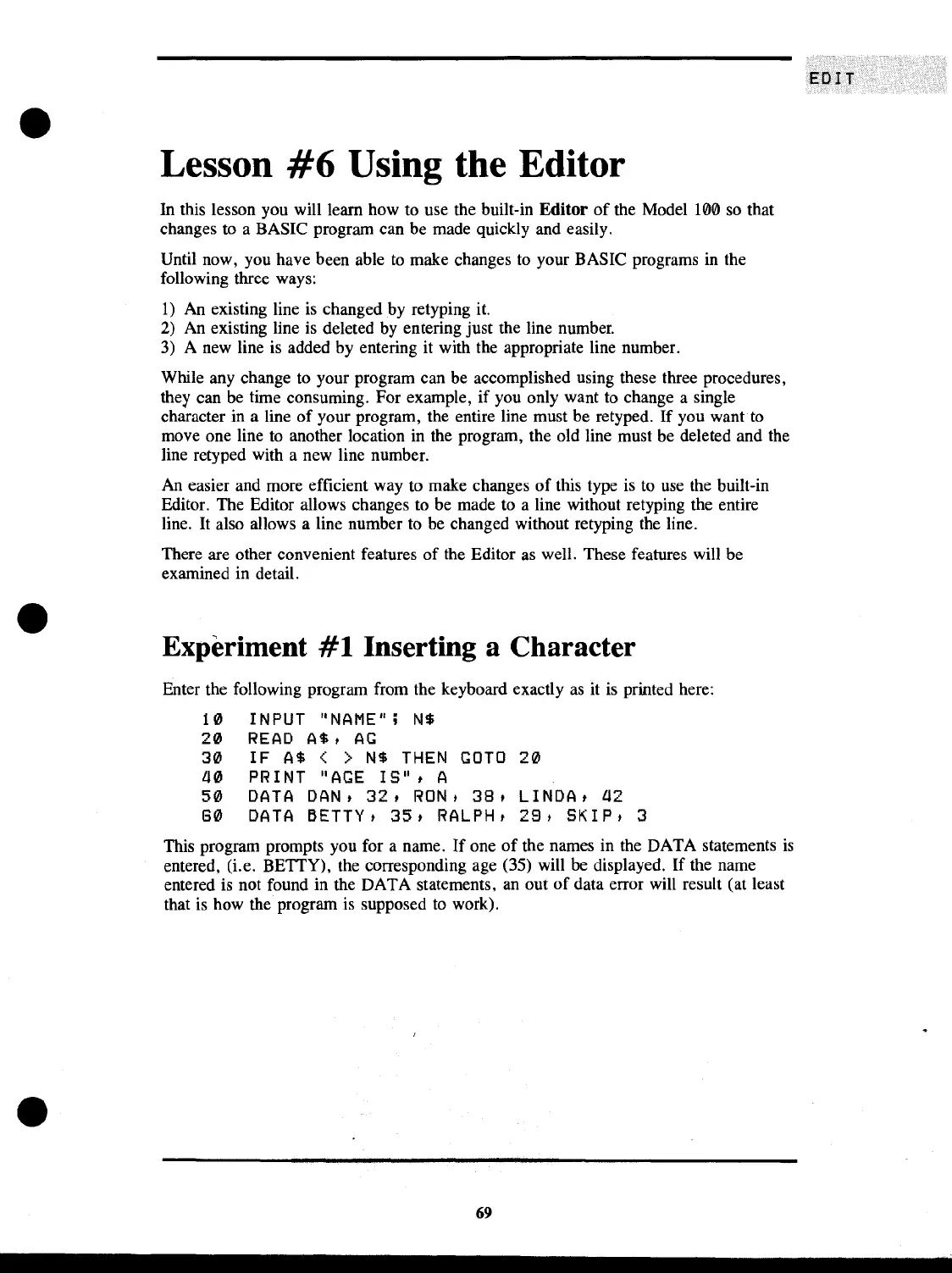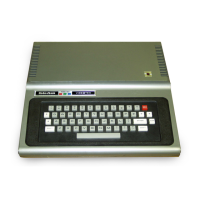Lesson
#6
Using the Editor
In this lesson you will learn how to use the built-in Editor
of
the Model 100
so
that
changes
to
a BASIC program can be made quickly and easily.
Until now, you have been able
to
make changes
to
your BASIC programs
in
the
following three ways:
I)
An
existing line
is
changed by retyping it.
2)
An
existing line
is
deleted
by
entering just the line number.
3)
A new line is added by entering
it
with the appropriate line number.
While any change
to
your program can be accomplished using these three procedures,
they can be time consuming. For example,
if
you only want
to
change a single
character
in
a line
of
your program, the entire line must be retyped.
If
you want·
to
move one line
to
another location in the program, the old line must be deleted and the
line retyped with a new line number.
An easier and more efficient way to make changes
of
this type is
to
use the built-in
Editor. The Editor allows changes
to
be made to a line without retyping the entire
line. It also allows a line number
to
be changed without retyping the line.
There are other convenient features
of
the Editor
as
well. These features will be
examined in detail.
Experiment
#1
Inserting a Character
Enter the following program from the keyboard exactly
as
it
is
printed here:
10
INPUT
~NAME";
N$
20
READ
A$,
AG
30 IF
A$
< >
N$
THEN
GOTO
20
00 PRINT
~AGE
IS",
A
50
DATA
DAN,
32,
RON,
38,
LINDA, 02
80
DATA
BETTY,
35,
RALPH,
29,
SKIP,
3
This program prompts you for a name.
If
one
of
the names in the DATA statements
is
entered, (i.e. BETTY), the corresponding age (35) will
be
displayed. If the name
entered is not found in the DATA statements,
an
out
of
data error will result (at least
that
is
how the program
is
supposed
to
work).
69

